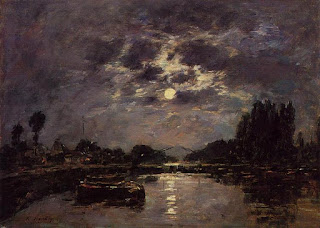Understanding Tides
Secular cosmologists reject creation out of hand, so they must devise their own origins mythologies for the moon. Some include the impact theory, where something smacked into a young molten Earth and the moon formed from the splatter. Another is that a wandering object was captured by Earth's gravity. They do not work. The moon has a unique orbit providing solar eclipses unlike any other in the solar system, which is a refutation of secular ideas. Another refutation is how the moon is vital to life on Earth by causing tides.
 |
| The Effect of the Moon / Eugene Boudin / 1891 |
The forces that create ocean tides are outside our normal daily experience and so people sometimes struggle to explain them. Galileo (AD 1564–1642) famously erred by claiming that the earth’s rotation and orbit caused tides. However, as people in his day pointed out, this would cause only one high tide per day. Instead there are two along most coastlines in the world. However, centuries before Galileo, the medieval Anglo-Saxon monk and historian, the Venerable Bede (AD 673–735), correctly worked out that the moon was responsible. Yet Galileo rejected lunar attraction as too mystical. This was not an easy thing to understand, because even if the tides are higher at a full moon, they are also high at the new moon. Also, the maximum height is usually not when the moon is straight overhead.
To read all of this extremely interesting article, navigate your way to "Tides." You may also be like "Influence of the Moon."